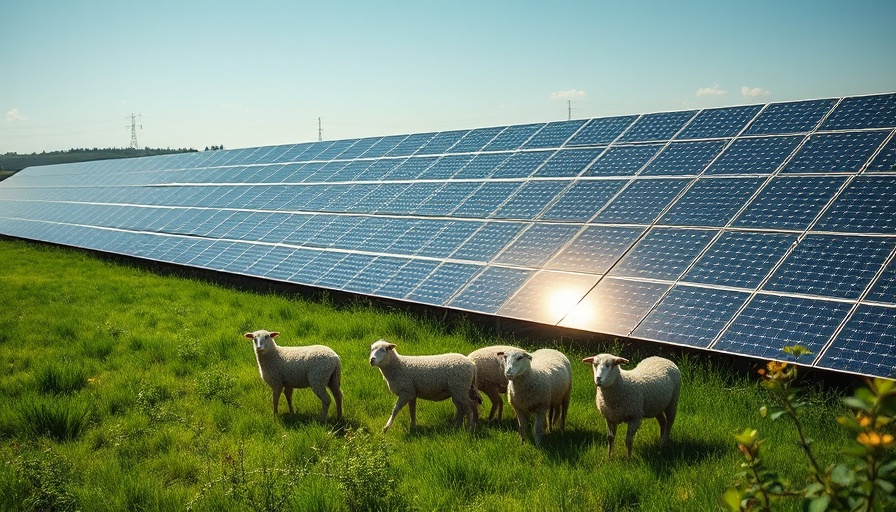
The Promise of Agrivoltaic Systems
Agrivoltaic systems represent a groundbreaking evolution in sustainable agriculture, integrating solar energy production with food cultivation. This multifaceted technique addresses the pressing issues of climate change and global food insecurity. By positioning solar panels above crops, these systems effectively reduce land-use conflicts while improving microclimates, thus aiding in crop growth. For instance, in drier regions, agrivoltaics can enhance flower production and stimulate pollinator activity, ultimately fortifying both energy and biodiversity outcomes.
Tracking Innovations for Enhanced Performance
With the expansion of agrivoltaics, the implementation of advanced tracking systems is becoming increasingly essential. Horizontal single-axis tracking (HSAT) technologies have demonstrated their potential to optimize solar energy capture while simultaneously protecting crops. By modifying the angle of solar panels, farmers can achieve an improve balance between solar energy outputs and crop yield, optimizing for peak sunlight exposure during key growth phases. Recent findings suggest that advanced tracking can boost energy generation while maintaining crop productivity, an essential criterion for accessing state subsidies linked to agrivoltaic systems.
Case Study Insights from Apple's Orchards
A pivotal study conducted in southwestern Germany provided new insights into the optimization of solar panel angles tailored to specific crop light needs. Researchers utilized a custom simulation tool, APyV, which allowed for precise adjustments in panel positioning, ensuring apple trees received optimal light exposure while mitigating potential yield losses. By calibrating solar panel alignment according to the unique light requirements of apple varieties, the study demonstrated that an impressive 91 percent of the trees' annual light requirements could be met, even though there was a slight reduction in energy production.
Integrating Agronomic Expertise into Solar Strategies
This innovative approach bridges insights from agronomy and energy management, indicating a significant advancement in solar strategies. Traditional methods for managing light exposure based on fixed shading percentages could be replaced with absolute irradiance targets articulated in terms of energy, allowing for a more dynamic and responsive management of solar installations. Such a shift away from relative measures is crucial for enhancing the efficiency and effectiveness of agrivoltaic establishments, ensuring that both food and energy production goals are met simultaneously.
Future Directions and Research Implications
The future of agrivoltaics lies in refining technologies and methodologies that prioritize both agricultural and energy outputs. Integrating sophisticated light management strategies will minimize yield reductions during critical growth phases of sensitive crops, while also maximizing energy production efficiency. Ongoing research aimed at establishing comprehensive methods to evaluate the impacts of shading on various crops will be pivotal in advancing agrivoltaics as a standard practice in both agricultural and energy sectors.
Conclusion: A Sustainable Path Forward
As the global community increasingly turns to renewable energy solutions, agrivoltaic systems offer a promising path forward. By embracing optimized tracking strategies and aligning agricultural needs with solar energy production, stakeholders in this space can foster a mutually beneficial relationship between food security and sustainable energy generation. Homeowners and businesses interested in making a positive environmental impact should consider integrating these innovative systems into their operations, thus contributing to the dual goals of energy efficiency and agricultural sustainability.
Call to Action: For those curious about the potential of agrivoltaic systems in your area, consider exploring options for solar tracking technologies tailored to local agricultural needs.
 Add Row
Add Row  Add
Add 




Write A Comment